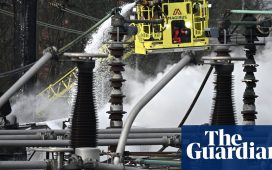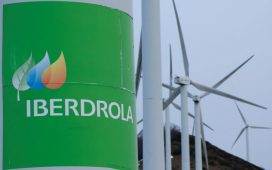Receive free UK energy updates
We’ll send you a myFT Daily Digest email rounding up the latest UK energy news every morning.
UK energy group SSE is banking on windy weather over winter after its renewables arm produced about one-fifth less power for British homes and businesses than expected since April.
The FTSE 100 company said output from its fleet of wind turbines and hydropower stations was 19 per cent lower than planned during the six months to the end of September due to adverse weather conditions.
The lower output is one factor behind guidance published on Wednesday of adjusted earnings per share for the period of at least 30 pence, lower than the 41.8 pence it made in the same period last year.
However, the company is sticking to its guidance of adjusted earnings per share of more than 150 pence for the full year to the end of March 2024.
“With the key winter months to come, full-year performance remains subject to weather conditions, plant performance and market conditions,” the company said.
“These risks will be carefully managed through the second half.”
SSE is one of the UK’s largest renewable power companies, with an installed generation capacity of almost 4 gigawatt, capable of powering several million homes, mostly onshore wind.
That portfolio produced 10,159 gigawatt hours of renewable power in the year to the end of March 2023, up from 9,423 GWh in the previous year.
The company is building what is set to be the world’s largest wind farm, the 3.6GW Dogger Bank farm off the north-east coast of England, and owns and runs electricity networks.
It also owns gas-fired power plants and gas storage sites around England.
SSE has set out plans to invest £18bn by 2027, and potentially as much as £40bn over the decade, in clean energy projects and networks, mostly in the UK and Ireland.
The company benefited last year from surging gas and electricity prices connected to market turmoil following Russia’s invasion of Ukraine and low output from France’s nuclear power stations.
Its adjusted pre-tax profits for the year ending March 2023 climbed 89 per cent, from £1.16bn to £2.2bn. The bulk of that came from its gas business, which made £1.2bn in operating profits.
Electricity and gas prices in Britain have since eased, with France’s nuclear output returning and Europe filling up gas storage stocks, although they are still higher than long-term averages before the Ukraine war.
In its update to the stock exchange, SSE described a “more stable market environment”.
It expects its gas storage business to report a loss for the first half of the year as it stocks up, which would turn to profit when the gas is withdrawn during winter.
Gregor Alexander, finance director, said the company’s focus “remains on delivery of our five-year plan out to 2027, which is the platform for up to £40bn of investment in net zero over the next decade”.
He added: “We have reached key milestones in the construction of our flagship renewables projects.”
Shares climbed 1 per cent to £15.30 by lunchtime on Wednesday in London trade.











